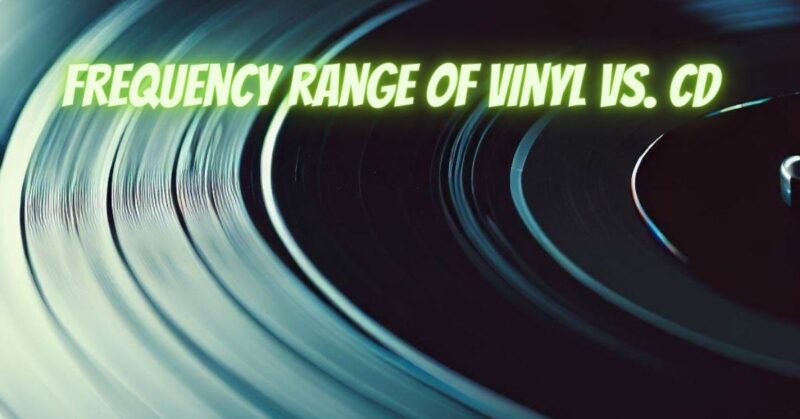The realm of audio formats is rich and diverse, with vinyl records and CDs being two iconic contenders that have captivated music enthusiasts for decades. Among the factors that differentiate these formats is the frequency range—the spectrum of audible frequencies they can reproduce. In this article, we’ll delve into the frequency ranges of vinyl records and CDs, exploring how each format contributes to the sonic landscape and influences the listening experience.
Understanding Frequency Range:
Frequency range refers to the span of audible frequencies that a particular audio format can reproduce. The human ear can typically perceive sounds ranging from around 20 Hz (low bass) to 20,000 Hz (high treble).
Vinyl Records and Frequency Range:
- Warm Analog Sound: Vinyl records are revered for their warm, analog sound characterized by smooth highs and rich lows. The frequency response of vinyl records extends from approximately 20 Hz to 20,000 Hz, covering the full range of human hearing.
- Vinyl’s Limitations: While vinyl can reproduce the full audible spectrum, its frequency response can be influenced by physical limitations and technical factors. The outer grooves of a vinyl record might exhibit less fidelity due to the greater distance the stylus travels per rotation.
- Presence of Harmonics: Vinyl records often capture harmonic content, which contributes to the warm and natural sound associated with the format. Harmonics can add complexity and texture to the music.
CDs and Frequency Range:
- Digital Precision: CDs utilize digital technology to capture and reproduce audio with remarkable precision. The frequency response of CDs typically extends from 20 Hz to 20,000 Hz, matching the limits of human hearing.
- High-Fidelity Reproduction: CDs are capable of delivering high-fidelity sound reproduction across the entire frequency spectrum. The absence of analog imperfections allows for accurate representation of the original recording.
- Potential for Lossless Sound: CDs, when properly mastered, can provide a near-lossless representation of the original recording. The digital format minimizes signal degradation and preserves the subtleties of the original sound.
Comparing the Listening Experience:
- Vinyl’s Warmth and Character: Vinyl’s frequency range contributes to its distinct warm and textured sound. The analog nature of vinyl records can enhance the harmonics and character of the music, resulting in a unique listening experience.
- CDs’ Technical Precision: CDs excel in technical precision and accuracy. Their ability to faithfully reproduce the entire audible spectrum ensures a clean and detailed sound representation.
The frequency range of vinyl records and CDs plays a significant role in shaping the sonic characteristics of each format. Vinyl records offer a warm and textured sound with an extended frequency response, while CDs provide accurate and high-fidelity sound representation across the entire spectrum. The choice between the two formats ultimately depends on personal preferences, with vinyl appealing to those seeking a more organic and character-rich sound, while CDs cater to those who prioritize technical accuracy and faithful sound reproduction.


